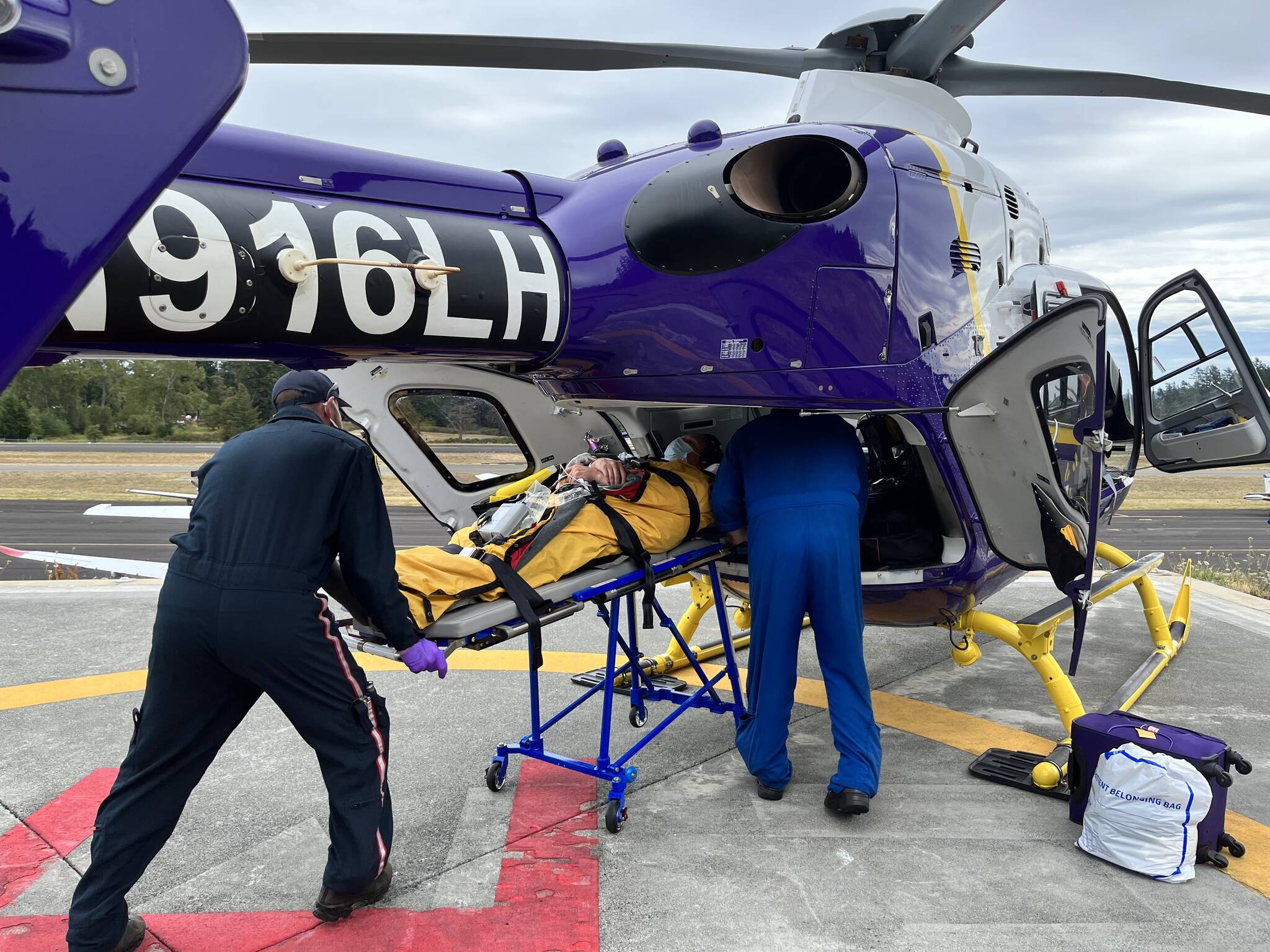If you live in the San Juans and have a medical emergency that requires air transport to a hospital, there are three providers: Island Air Ambulance, Airlift Northwest and Lifeflight Network.
In the event that your primary insurance doesn’t cover the cost of a flight, each company offers its own membership fees to ensure patients don’t incur a hefty bill. Island Air and Airlift NW are long-standing local providers but Lifeflight is relatively new to the San Juan County medical scene.
“We’ve started using Lifeflight more in the past year or so,” said San Juan County Medical Director Joshua Corsa, MD. “Airlift and Lifeflight used to reciprocate with each other’s memberships but that is no longer. I can understand it’s frustrating. When we make our decisions for time-critical emergencies, we chose whoever is the closest, most appropriate provider. And sometimes it can be an hour’s wait in the summer. So not using Lifeflight isn’t an option.”
James Richardson, Western Outreach Coordinator for Airlift NW, said reciprocity between the programs — meaning membership with Airlift covered patients who flew with Lifeflight — is now illegal after Washington State Attorney General Bob Ferguson ruled that because the memberships are not insurance policies, they do not meet the reciprocity guidelines.
Island Air, based in Friday Harbor, offers fixed-wing aircraft (small planes). Airlift NW, a nonprofit program of the University of Washington, and Lifeflight both primarily use helicopters. Weather conditions and where the patient is located dictate which flight service is used. All three providers fly with medical personnel.
Memberships purchased through the airlift services act as a non-insurance supplement to your existing insurance. Enrollment with all three providers includes coverage for households and families. Medicare and Medicaid both include an ambulance benefit so having a membership is not recommended for those patients.
“I view it as the cost of living and working in the San Juans,” Corsa said. “Plus, all three providers allow you to sign up for the membership right there and then at the time of the emergency. There are only three air flight companies in the state, so I am covered pretty much wherever I go. I have been thrilled with all three. From a medical point of view, it’s been wonderful to have access to a third provider.”
Lifeflight (https://member.lifeflight.org/) asserts that there are “no out-of-pocket expenses beyond your annual membership.” If transport is deemed medically necessary or an emergency, flights flown by Life Flight Network or one of its reciprocal partners are covered with your membership. Life Flight Network works directly with insurance companies for their portion of the payment and the rest of the cost is covered by your membership. The company offers several yearly plans including air, ground and air + ground. Unlike Island Air and Airlift NW, Lifelight does not require primary health insurance to be a member. The company services Washington, Oregon, Idaho and Montana.
Island Air (https://www.islandairambulance.com/) states that its $39/per year membership covers “out-of-pocket costs like co-pays and deductibles.” Those without health insurance, while not eligible for membership, are still eligible for service, according to its website.
Airlift NW (https://www.uwmedicine.org/airliftnw), which also requires members to have existing insurance, states, “As a member, only your insurance company receives a bill. Airlift Northwest works directly with your insurance company for claims processing. The membership program is secondary to all payers. The purpose of the membership is to cover the patient responsibility amount indicated by the insurance company.” The cost is $60 per year.
Airlift has 2,739 enrolled households in San Juan County with a total of 6,041 people covered. Richardson says UW provides around $2.5 million in charity flights a year, and if a patient can’t pay, they will “not come after you with a bill collector.”
Will Hamilton of Island Air noted there is a new federal law that protects patients from unexpected medical bills.
“The No Surprises Act protects folks covered under group and individual health plans from receiving surprise medical bills from air ambulance service providers,” he said.
Effective January 1, 2022, the act is designed to protect patients from surprise bills for emergency services at out-of-network facilities or for out-of-network providers at in-network facilities, holding them liable only for in-network cost-sharing amounts. The No Surprises Act also enables uninsured patients to receive a good faith estimate of the cost of care.
San Juan County at a glance
Orcas Island sees about 1200 emergency medical calls per year and Lopez EMS responds to half of that number. Around 30 percent of the calls on Lopez and Orcas are airlifted to the mainland.
“San Juan does less because they have the hospital (Peace Health) right there. They still do 300 to 400 flights per year,” Corsa said. “We have one of the highest ‘no transport’ statistics in the nation because of the cost and location.”
Corsa said the county is currently conducting a study with patients who weren’t flown to determine if it was the right call.
“It’s so can tailor who we are flying off,” he said.
Corsa has also initiated two pilot studies in the county: treating severe sepsis with antibiotics and providing blood transfusions after testing patients’ hemoglobin levels — both in the ambulance prior to hospitalization.
“We are trying to put more capabilities in the ambulance,” he said. “We are one of three test sites in the country for the hemoglobin meter. We also take ultrasounds in the ambulance. There are a lot of things we are doing in the county that are first in the nation.”



